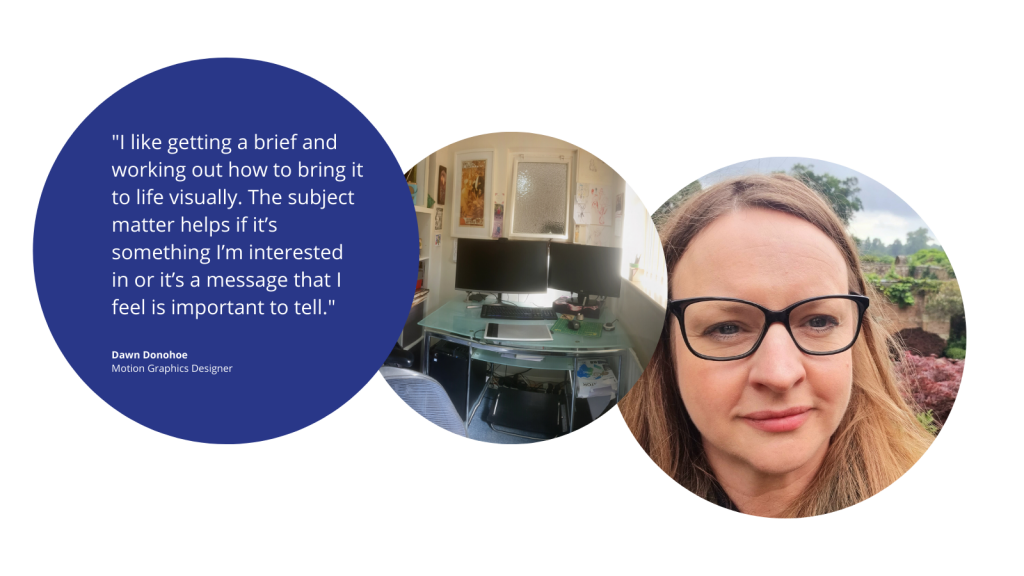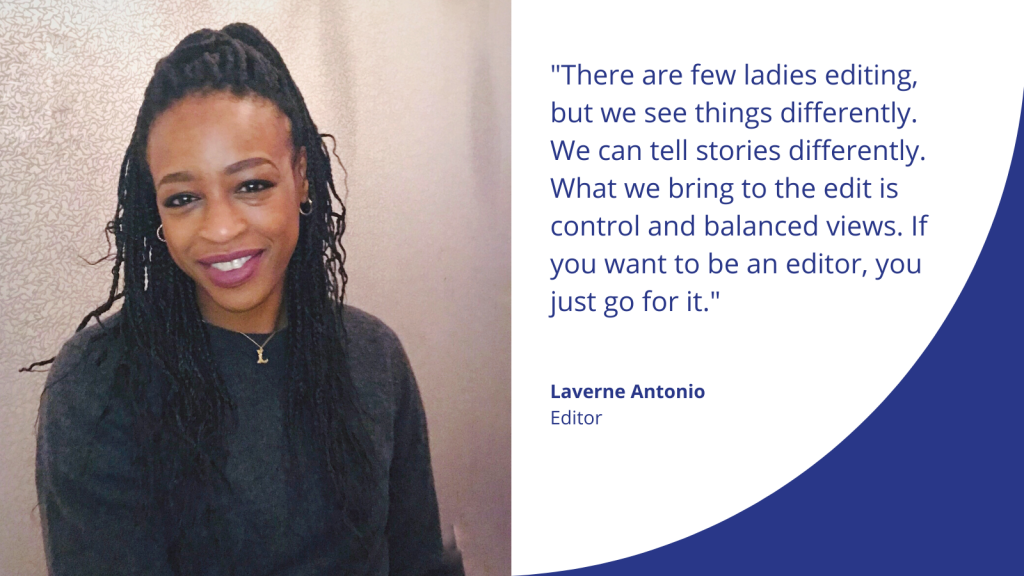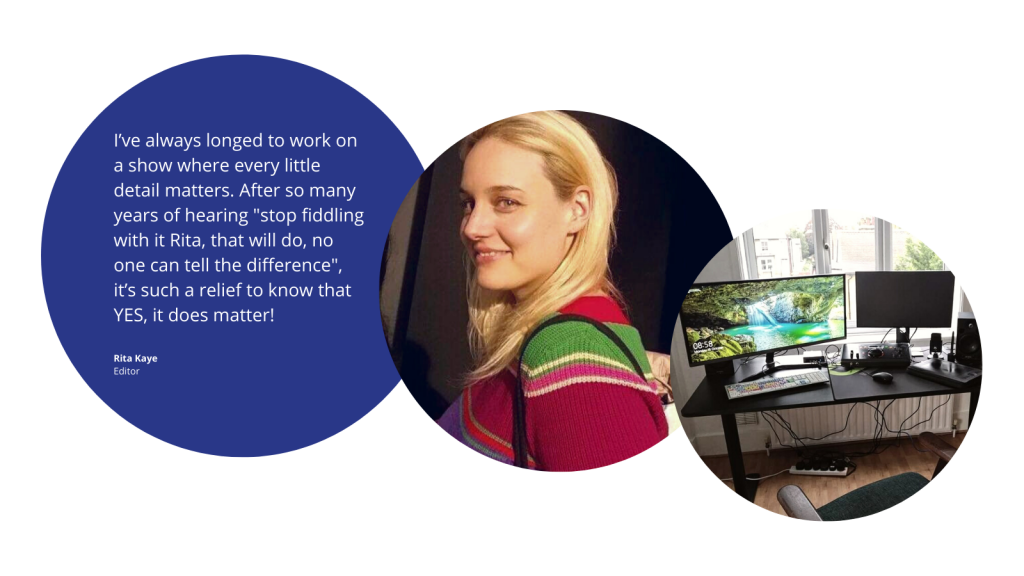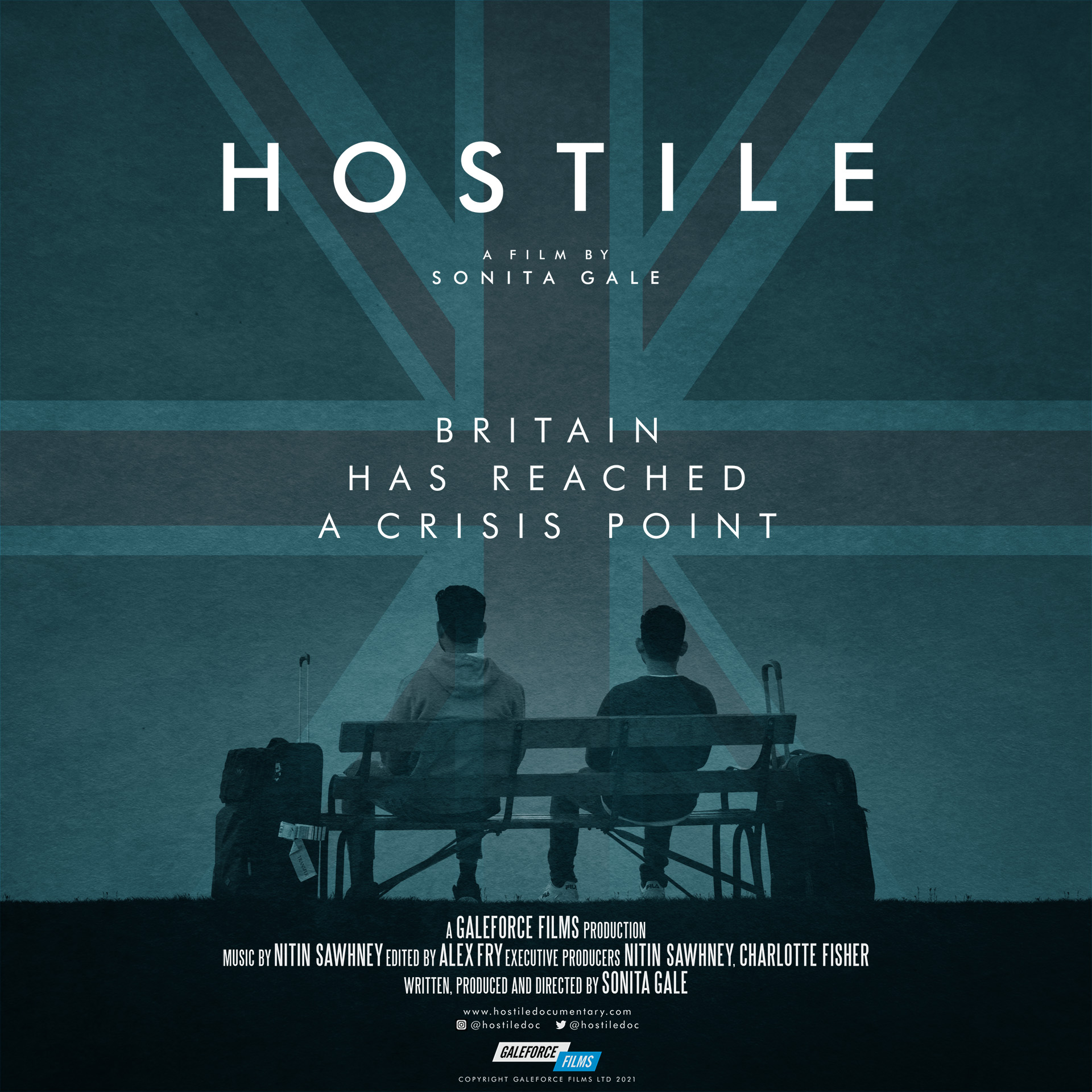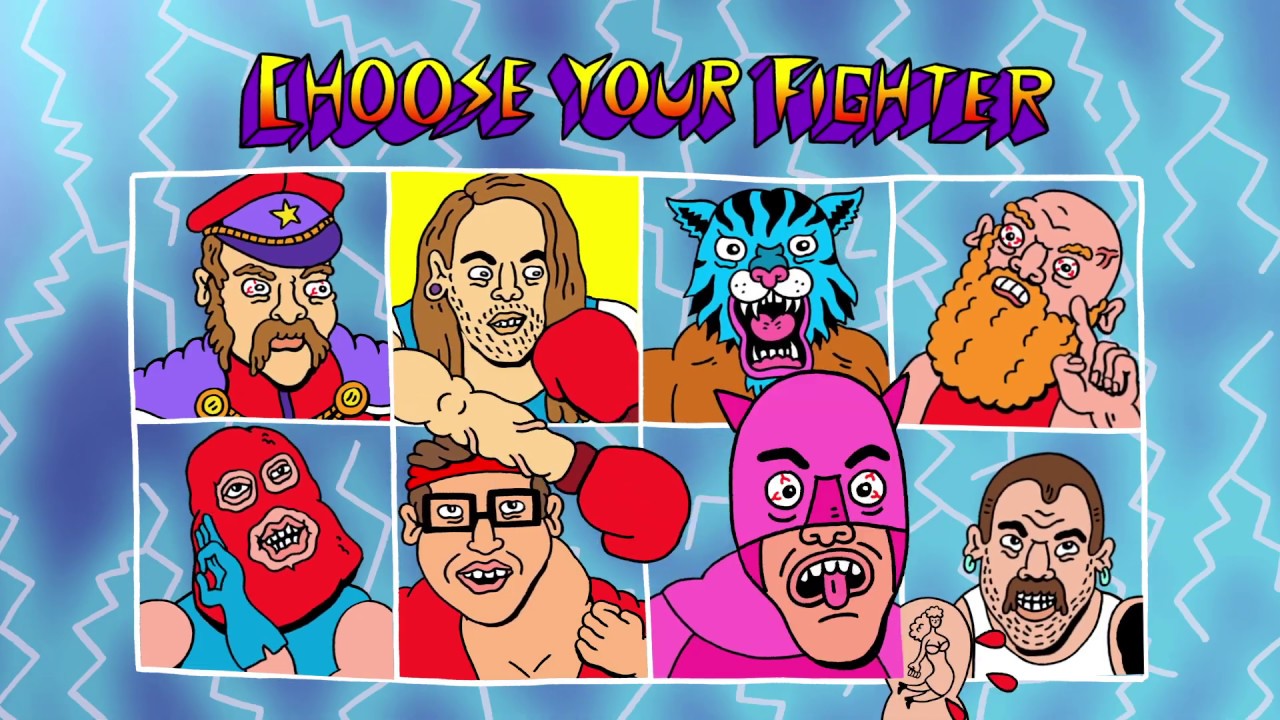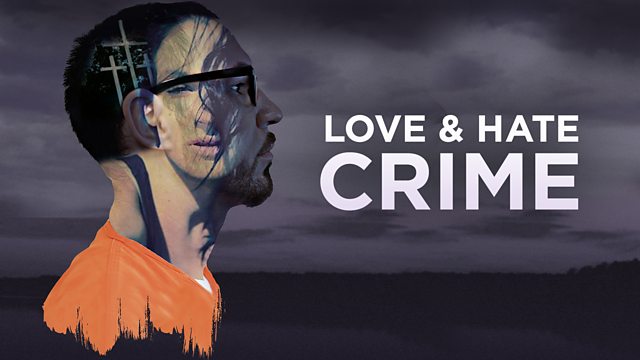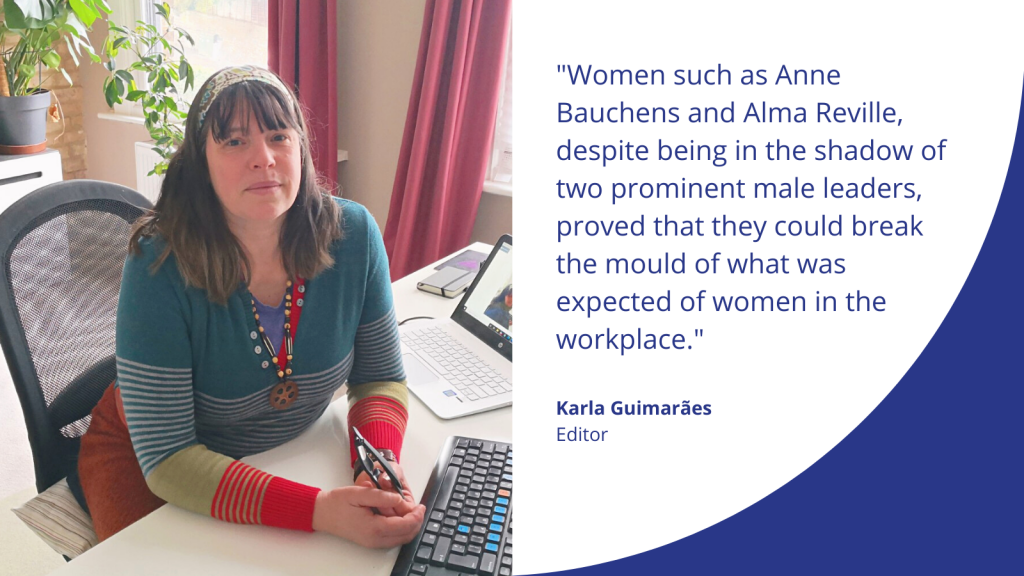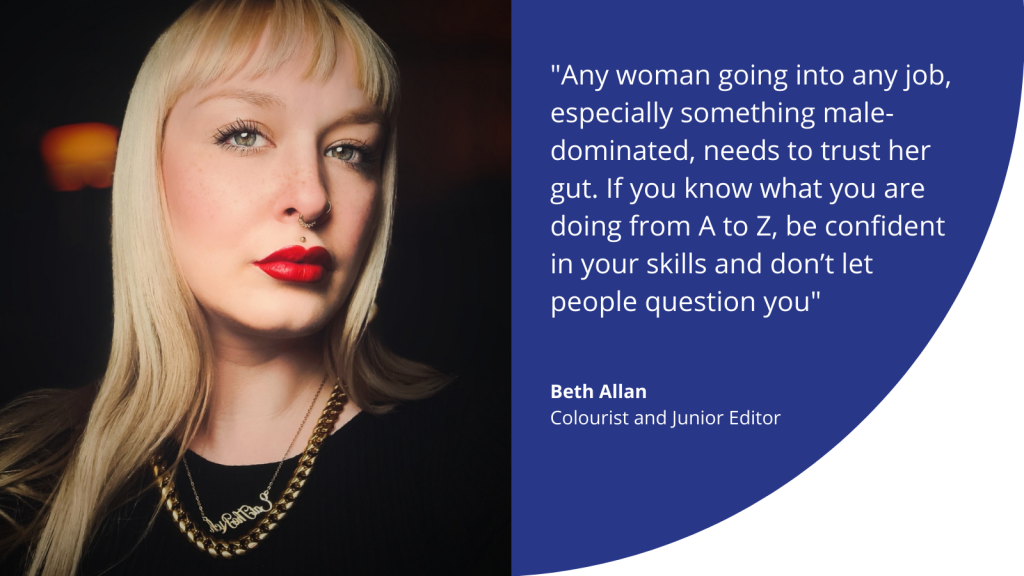Karla Guimarães specialises in editing documentaries and factual programming. Previously she has worked on long-running series including ‘Dispatches’, ‘Panorama’, ‘22 Kids and Counting’ and one-off documentary ‘Jimmy Saville: The People Who Knew’. Karla’s multilingual skills have allowed her to work on productions in English, Portuguese and Spanish for both UK and foreign productions, several of which have gone on to win awards at Chicago, New York and Malaysian film festivals.
Did you always want to pursue a career in post-production?
No, I wanted to be a camera operator. I had an excellent opportunity to work on a big commercial campaign which, out of their desperation, enabled me to work across several positions, starting as 2nd camera assistant through to post–producer. It was here where I discovered my calling as an editor. After the campaign finished, I knocked on the door of another post-production company. I was given the job as 2nd assistant editor on the feature film ‘Era Uma Vez…’ (Once Upon a Time…) directed by Arturo Uranga.
I am a real go-getter; once I have something in mind, nothing will stop me.
Did you train initially as a camera operator?
Not especially train as such, more feel my way and learn by experience working on the job. My first paid job was as still photographer for an off-road jeep and motorbike magazine. I fancied making the change to moving pictures. Luckily for me, I am a real go-getter; once I have something in mind, nothing will stop me. I knocked on the door of a production company offering my services. They gave me a position as 2nd assistant camera.
Are there any women in post who have inspired you?
Women have been in post-production since the beginning of silent film, working on menial jobs such as hand colouring and editing. Early editors eventually showed that the editor’s skill was just as crucial to the final outcome of the picture as the writer and director. Women such as Anne Bauchens and Alma Reville, who, despite still being in the shadow of two of the prominent male leaders, proved that they could break the mould of what was expected of women in the workplace. Those two women and the countless unnamed women in the back rooms cutting film are my inspiration in the industry.
What’s your day to day schedule like when working on a project?
I’ve been working from home now for quite some time. I start my day with an espresso and go over any emails, reading through script changes, and so on. Then, I close myself in my suite to make some editing magic. I usually eat lunch at my desk, resurfacing mid-evening. I suffer on/off from insomnia but have learned to use it positively when my mind is whirring. I will sometimes work overnight, experimenting with the material.
Is there much room for creative control on projects you’ve worked on?
It depends significantly on the project and who I am working with. Last year I had an opportunity to work with people who let me choose the stories, which was remarkable freedom, and I got to make my mark on that project. Some, of course, are somewhat rigid in their requirements, so on those occasions, I may have less flexibility.
What are some of the biggest challenges you have faced as an editor?
The inability to stop working 24 hours is one significant downside to being an editor. When the directors and producers finish for the day, the editor will still carry on to get that perfect scene. I find myself editing my dreams (I’m not joking!).
How has the industry changed since you first started out as an editor?
It’s changed a lot. I started working on analogic systems when digital was in its infancy. I had to run the physical analogic tape through three players and a fourth to record. Making changes was difficult and caused deterioration in quality due to having to reduplicate the initial cut. Each visual effect had its own machines, such as dissolves and zooms. Advances in technology have been a godsend for changes and freedom to experiment. However, at the same time, I feel that it may have resulted in a loss of some creativeness. Today there are so many more rushes than when it was on film. There is no longer the barrier of cost. But, as a downside, there is often less care in what is being filmed. The process has changed too; now, there is more demand to work to shorter deadlines than before.
And now it’s easier to rectify any mistakes in the editing process…
Yes, that is undoubtedly one upside to digital editing. There wasn’t much you could do about it when something went wrong. I guess we were more careful.
How has lockdown been for you?
On the one hand, I lost the ability to spend time with colleagues in person, but on the other side of the same coin, I got to spend the time I would have once spent commuting with my partner. Additionally, I bought an old wreck of a house one month before going into the first lockdown, so my partner and I got to spend this time together refurbishing. Of course, the first project was getting an editing suite of my dreams! If it wasn’t for lockdown, I guess my suite would have become the spare bedroom, but now I think it will be strange to be back in a proper finishing house.
Do you have any advice for other women pursuing a career in the industry?
Patience, resilience, and keep going! I don’t have a recipe or formula other than pushing on when times are tough, don’t give up and believe in yourself because if you don’t, who will?
